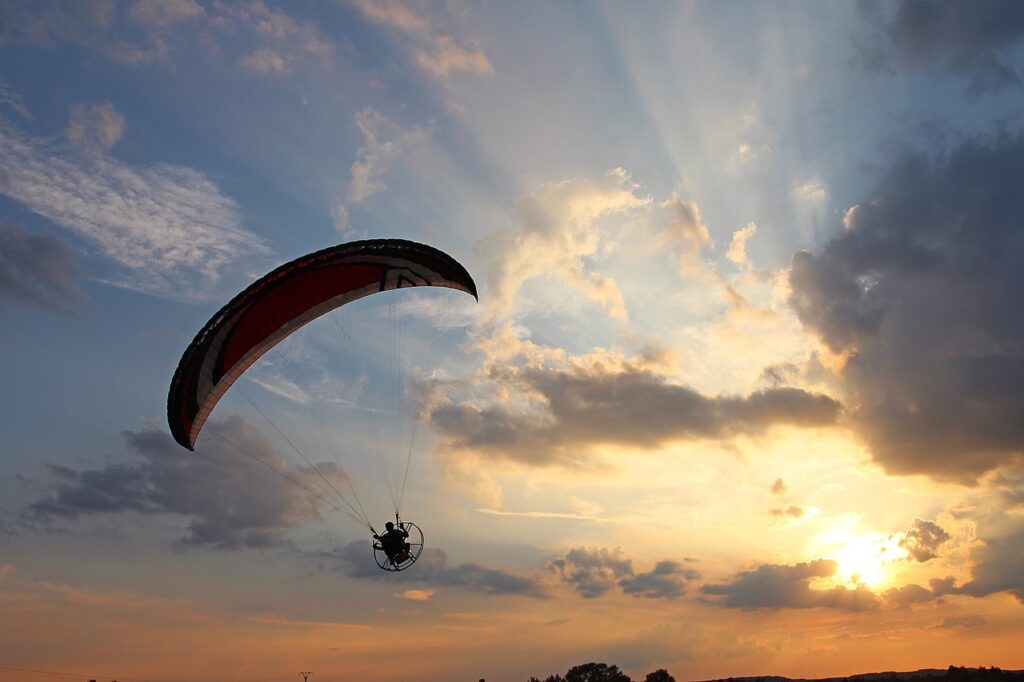The Growth Of Indoor Skydiving: A Thrilling Alternative For Adrenaline Junkies
- KKadmin
- Mar, 18, 2024
- indoor skydiving, outdoors, skydiving
- No Comments
Indoor skydiving, also known as bodyflight or tunnel flying, is a relatively new sport that has rapidly gained popularity among adrenaline junkies and thrill-seekers. This exhilarating activity allows individuals to experience the feeling of freefall without having to jump out of an airplane. With vertical wind tunnels and specialized equipment, indoor skydiving has become a safer and more accessible alternative to traditional skydiving. Zachary Sanns explores the growth of indoor skydiving and its appeal to individuals seeking a thrilling and unique experience. As technology advances and more facilities open up worldwide, it is clear that indoor skydiving is here to stay and will continue attracting people from all walks of life.

The Appeal of Indoor Skydiving
Indoor skydiving has become popular in recent years, drawing thrill-seekers from all over the world. One of the main appeals of indoor skydiving is its accessibility. Unlike traditional outdoor skydiving, which requires a plane and open space to jump from, indoor skydiving can be done indoors using a vertical wind tunnel. This makes it a more convenient and less intimidating option for those interested in skydiving but hesitant to jump out of a plane.
Additionally, indoor skydiving offers a unique experience that other activities cannot replicate. The feeling of floating in mid-air, with the wind rushing past you and the sensation of weightlessness, is truly exhilarating. It provides freedom and adrenaline that is hard to find in other recreational activities. This unique experience has attracted many individuals, including seasoned skydivers looking for a new challenge and those seeking an alternative way to get their adrenaline fix.
Advancements in Indoor Skydiving Technology
As indoor skydiving’s popularity has grown, so has the technology behind it. In its early days, indoor skydiving involved using large fans to create a vertical wind tunnel that simulates freefall. However, technological advancements have led to modern, state-of-the-art wind tunnels that provide a more realistic and immersive experience. These new wind tunnels use powerful motors and sophisticated designs to create a smoother and more controlled airflow, allowing for greater precision and control during the flight.
Furthermore, technological advancements have created specialized equipment and gear specifically designed for indoor skydiving. This includes custom jumpsuits that improve aerodynamics and allow for better maneuverability and helmets with built-in communication systems for instructors to guide and communicate with flyers during their flights. These advancements have enhanced the overall experience of indoor skydiving and made it safer and more accessible to a wider range of individuals.
The Growing Industry of Indoor Skydiving
Indoor skydiving has become a lucrative industry. Facilities can now be found in many major cities worldwide, and they continue to expand and attract more visitors each year. These facilities offer indoor skydiving experiences and host events, competitions, and training programs for those interested in taking their skills to the next level. This has created new job opportunities for instructors, engineers, and other professionals in the field.
The growth of indoor skydiving has also positively impacted the economy. The influx of tourists to these facilities generates revenue for local businesses. Additionally, the technology used in indoor skydiving can be applied to other industries, leading to further economic benefits. As the industry continues to grow, it is expected to create even more opportunities and contribute to the economy in various ways.
The Future of Indoor Skydiving
The future of indoor skydiving looks promising as it continues to gain popularity. We can expect to see realistic and immersive experiences. This may include the use of virtual reality to enhance the overall experience.
Moreover, with the rise of eco-tourism and sustainable practices, there is potential for indoor skydiving facilities to implement environmentally friendly practices. This could include using renewable energy sources and implementing sustainable building designs. Incorporating these practices could attract a new audience and contribute to the industry’s growth.
Final Thoughts
Indoor skydiving has come a long way from its humble beginnings and has become a popular recreational activity with a growing industry. Its accessibility, unique experience, and technological advancements have made it appealing to many individuals, leading to its continuous growth. With further innovations and developments on the horizon, the future of indoor skydiving looks bright, and it will continue to provide an exhilarating experience for those seeking a thrilling adventure.
Recent Posts
- Building a Customer-Centric Business: Strategies for Enhancing Satisfaction and Loyalty
- The Growth Of Indoor Skydiving: A Thrilling Alternative For Adrenaline Junkies
- Fascinating Tales And Storytelling Magic Within The World Of Puppeteering
- Studying for Your Behavioral Science Degree? Key Concepts to Master
- Score High Marks: Tools and Tips for Online High School Success